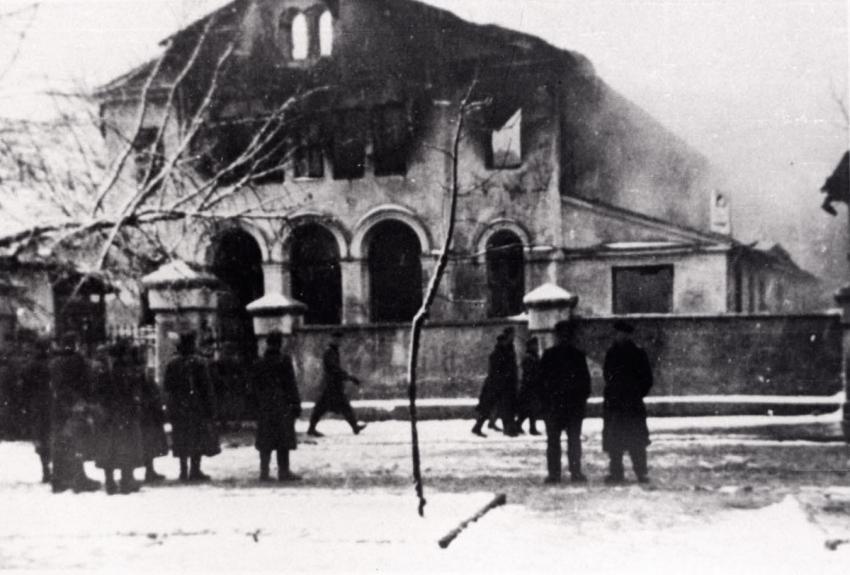The Germans returned to Siedlce on 10 October, and continued to loot and seize Jews for forced labor, both in the city and in the surrounding labor camps. On 24 December 1939, Christmas Eve, the Germans set fire to the Great Synagogue in Siedlce, the neighboring Jewish study house (beit midrash) and Jewish community offices. Refugees sheltering in the synagogue perished in the blaze.
In October 1940, the Germans approved the Judenrat's initiative to set up workshops in Siedlce, and permitted some of the forced laborers to return to the city. On 1 August 1941, two ghettos were established in Siedlce, which were sealed in October the same year. The deplorable living conditions and extreme overcrowding in the two ghettos led to epidemics and a high mortality rate.
On 22 August 1942, the Siedlce ghetto was surrounded by German forces, assisted by the Polish Blue Police. Within two days some 2,300 Jews were murdered, and about 10,000 were deported to the Treblinka death camp. Approximately 2,000 Jews who could not board the crammed cattle cars were shot dead. Another 200 who tried to hide were murdered too, by the Germans, the Ukrainians and the local Polish population.
Approximately 2,000 Jews were confined in the "small ghetto" for forced labor. In September, most of them were sent to labor camps where they perished due to the harsh conditions, and others were deported to Treblinka. The ghetto was liquidated in November 1942. The remaining Jews were marched to a nearby labor camp and then back to Siedlce. On the way, hundreds were murdered by Ukrainian guards. The survivors who reached the city were deported to Treblinka. Dozens of Jews jumped off the train, but most did not survive.
Of the 500 Jews remaining in Siedlce, 150 were murdered in January 1943, dozens escaped over the winter and the rest were murdered by the Germans in March 1943.
Yad Vashem Photo Archives 2656/155







